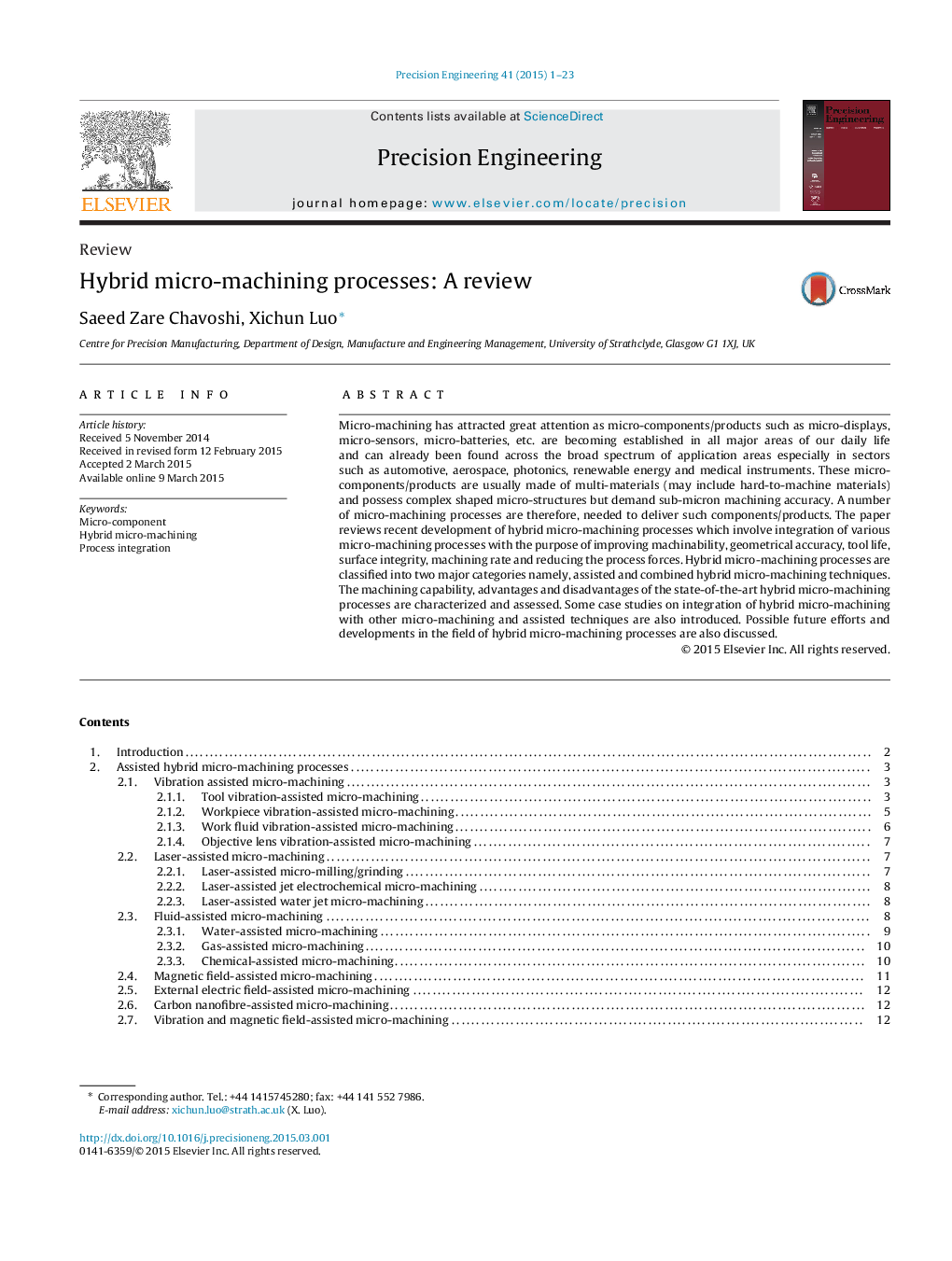| Article ID | Journal | Published Year | Pages | File Type |
|---|---|---|---|---|
| 7180749 | Precision Engineering | 2015 | 23 Pages |
Abstract
Micro-machining has attracted great attention as micro-components/products such as micro-displays, micro-sensors, micro-batteries, etc. are becoming established in all major areas of our daily life and can already been found across the broad spectrum of application areas especially in sectors such as automotive, aerospace, photonics, renewable energy and medical instruments. These micro-components/products are usually made of multi-materials (may include hard-to-machine materials) and possess complex shaped micro-structures but demand sub-micron machining accuracy. A number of micro-machining processes are therefore, needed to deliver such components/products. The paper reviews recent development of hybrid micro-machining processes which involve integration of various micro-machining processes with the purpose of improving machinability, geometrical accuracy, tool life, surface integrity, machining rate and reducing the process forces. Hybrid micro-machining processes are classified into two major categories namely, assisted and combined hybrid micro-machining techniques. The machining capability, advantages and disadvantages of the state-of-the-art hybrid micro-machining processes are characterized and assessed. Some case studies on integration of hybrid micro-machining with other micro-machining and assisted techniques are also introduced. Possible future efforts and developments in the field of hybrid micro-machining processes are also discussed.
Keywords
Related Topics
Physical Sciences and Engineering
Engineering
Industrial and Manufacturing Engineering
Authors
Saeed Zare Chavoshi, Xichun Luo,
